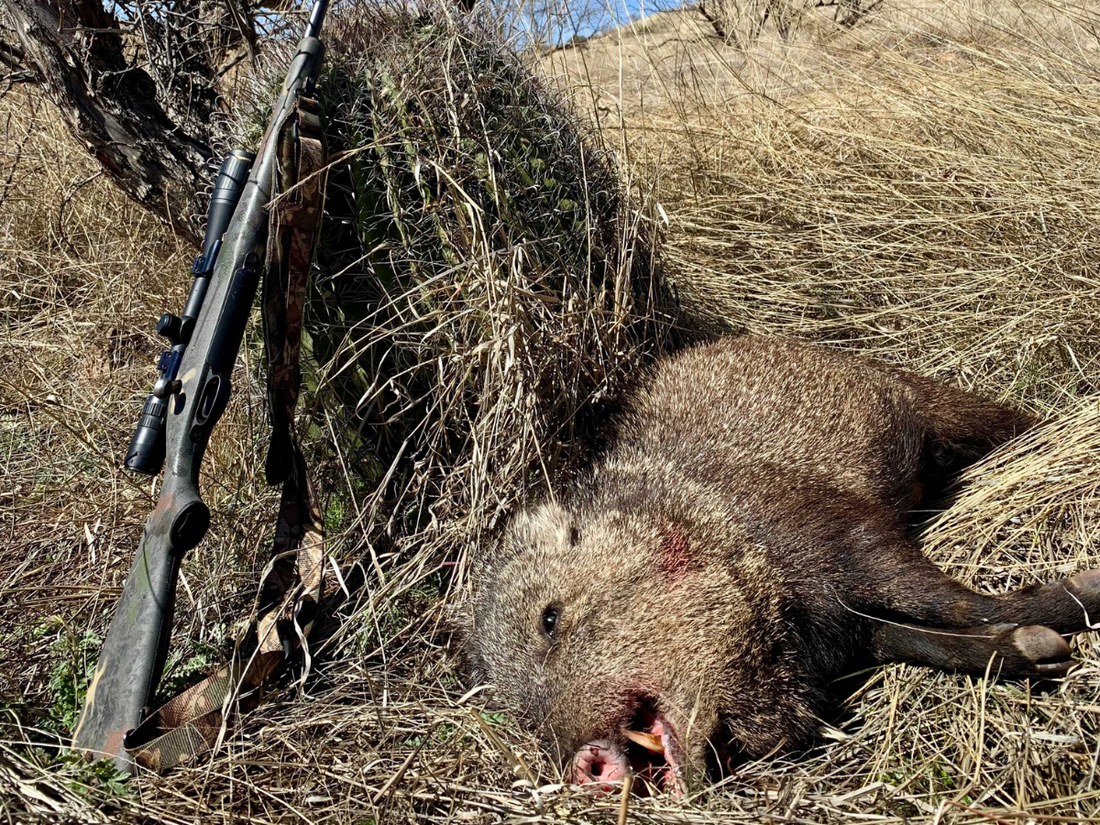It happens far too often. I’ll be talking with another hunter and the subject of javelina hunting comes up. It doesn’t take too long before I find myself being educated on how these animals are not actually pigs, but rodents. You heard that right: rodents. The same family as mice, rats, and squirrels. However, this “rodent” curiously has a pig-like snout and even-toed hooves. I’ve had others argue with me that they are more closely related to goats than pigs. I believe it’s safe to say that there are very few North American game animals as misunderstood as the javelina. There are a plethora of misconceptions about these awesome little animals and I’d like to clear some of those up.
The javelina is a peccary. While there are three species recognized in the Americas, only the collared peccary (Peccary tajacu) occurs in North America. Peccaries are a new world pig; yes, a pig, but not exactly the same pig that most of us recognize from the farm. New world pigs belong to the Tayassuidae family, which evolved about 30 million years ago from a close common ancestor of the old world or “farm” pigs in the Suidae family. In the simplest version of a very long and complex evolutionary story, peccaries made it across a land bridge from Europe to the Americas, leaving the old world pigs behind. Freed of competition with their old world counterparts, they colonized the Americas and are still here today.

Now that we’re clear on what a javelina is, let’s resolve a nasty misconception about this species’ behavior. Javelina have an undeserved reputation as aggressive animals that are prone to attack without provocation. While this couldn’t be further from the truth, I believe this misunderstanding comes from a few things.
First, javelina have large sharp canine teeth, or “tusks,” that they will use for defense. Admittedly, these tusks are impressive and quite intimidating, but bites on humans are extremely rare. When they do occur, they are almost always associated with javelina that have been habituated to humans feeding them. Secondly, javelina have poor eyesight. Under the right circumstances, this allows humans to get closer to them than other wild animals might allow. This can be misconstrued as a lack of fear or even aggression when it’s simply a hapless javelina waiting for the wind direction to change, or for some other sensory que to come along, and let it know what’s going on. Finally, a family group (or squadron) of javelina, especially with babies (or reds), will attack a dog when they feel threatened. Attacks on dogs, especially hunting dogs who have more opportunities to encounter squadrons, are not uncommon. These encounters can happen quickly and have the potential to be deadly. While this should be taken seriously, it’s important to be clear that this behavior is not outright aggression, but rather self-defense. Dogs and other canine predators are a real threat to javelina, especially those with reds.
This last one is a real pet peeve of mine. Far too many hunters will tell you that javelina meat is inedible. Others will only do slightly better and suggest that they are only good for making chorizo or highly processed products like snack meat sticks. This misconception is so widely believed that in one state, javelina doesn’t even fall under wanton waste laws and the meat is legally allowed to be left in the field to rot. I will admit, usually long held misconceptions have at least a seed of truth to them or at least a somewhat reasonable explanation as to how they got started.
Saying that javelina are inedible lacks all reason. I’ve eaten many of them and none were made into chorizo or snack sticks. I would describe the flavor of the meat like a mild pork. I’ve grilled it, smoked it, fried it, and braised it. I’ve served it to neighbors, friends, and family. It’s all been delicious and everyone has thoroughly enjoyed it.
There is one thing that might have led to all this confusion; javelina’s nicknames. They are commonly called skunk pig or musk hog. Javelina can smell very much like a skunk, especially when feeling nervous or threatened. This odor in no way naturally imparts itself into the meat. The only way this could happen is by improper or sloppy processing. Javelina have a scent gland in the center of the lower back. It has the potential to contribute foulness to the meat if it were allowed to come into contact with it. The good news is that the gland is very easy to see and avoid. In fact, it comes right off with the skin. While it would take some very poor knife work for this gland to contact enough meat to ruin a whole javelina, this could be that “somewhat reasonable explanation” of how all this nonsense got started.
A lot of hunting in javelina country, regardless of your quarry, is done behind binoculars. One of my favorite things to do is settle into a hilltop perch on a cold winter morning and glass the surrounding countryside as the sun rises and warms the landscape. When I’m lucky enough to spot a squadron, I can easily sit for hours just watching these interesting animals interact with each other and their habitat. When I’m lucky enough to have a tag in my pocket and I get to bring one home, I know I’m in for some exceptional eating. Long held misconceptions can be stubborn, long lived, and hard to let go. Some who read this will simply dig their heels in deeper but I hope a few will take a second look at this awesome animal, ditch the misconceptions, and appreciate it for all that it is.


